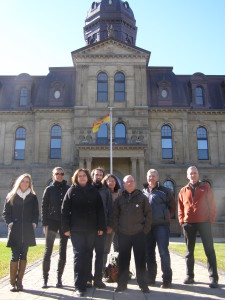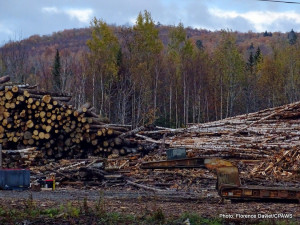
Canada is a country of forests. I have been privileged to travel each one of these forests. I’ve walked the temperate Rainforests that ribbon the Pacific coast; paddled and camped many nights in the Great Lakes-St. Lawrence forests of my youth; walked, paddled and flown thousands of hectares in the majestic Boreal Forest; and, now I live next to the Carolinian forests of the Rouge Valley.
In my time with Wildlands League, I have logged many helicopter hours flying forestry tenures with companies eager and brave enough to seek solutions to difficult environmental problems. It is quite something to really see a forest from a helicopter. I never tire of the view. My favourite flights have been in glass bottom helicopters where your feet look like they are floating in air.

What I know from my many hours in the air, is forestry is an industrial practice with an industrial footprint. Many foresters care as much about their footprint as I do. They love the land. It doesn’t change the fact that forestry is not natural. It is an industrial activity.
This week, I travelled to New Brunswick to discuss the state of forestry in our provinces with my colleagues from New Brunswick, Alberta, Quebec and Ontario. We also met with government representatives in New Brunswick as they contemplate a new Forest Strategy that will guide forestry in a province with almost half of Canada’s remaining Acadian forests.
Currently, New Brunswick ranks number 1 in Canada for herbicide use for forestry, an unenviable position. They are almost dead last in hectares protected; only Prince Edward Island is worse. No public forests are certified with the Forest Stewardship Council (FSC) standard. Environmentalists consider this the gold standard.
It was time to bring the CPAWS forestry team to New Brunswick to voice our collective concerns.

